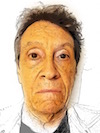 [This is the complete text of the keynote address delivered to the annual Southeast Regional Conference of the Society for Photographic Education on September 19th, 1997, at the Penland School of Arts, Penland, North Carolina. It was published in Exposure, the journal of the Society for Photographic Education, as part of a special “Teaching/2000” issue devoted to pedagogical concerns (Exposure 32:2, Jan. 1999, pp. 3-10). Part 3 appears below; click here for Part 1, and here for Part 2. — A. D. C.]
[This is the complete text of the keynote address delivered to the annual Southeast Regional Conference of the Society for Photographic Education on September 19th, 1997, at the Penland School of Arts, Penland, North Carolina. It was published in Exposure, the journal of the Society for Photographic Education, as part of a special “Teaching/2000” issue devoted to pedagogical concerns (Exposure 32:2, Jan. 1999, pp. 3-10). Part 3 appears below; click here for Part 1, and here for Part 2. — A. D. C.]
•
Toward the Empty Place:
On the Spiritual in Teaching (cont’d)
… From Philip Reiff I went — for counterpoint from within the university system — to a lesser-known but no less insightful thinker, New York University’s Henry J. Perkinson, with whom I had the honor of studying in the 1980s. In a small but wonderfully argued treatise, The Possibilities of Error, Perkinson — deeply concerned, as I know from his classes and private conversations, with the deteriorating quality of education everywhere in this country — speaks eloquently of the problems inherent in a teacher’s “masking” the authoritarian premises of most teacher-student relationships with kind, considerate and loving mannerisms. (Ah, Miss Salimondo.) Instead, he encourages teachers to “minimize the fears that adults cause in the young,” to “try to avoid or minimize those behaviors or situations that pressure, confuse, bore, alienate, manipulate, and victimize the young.”
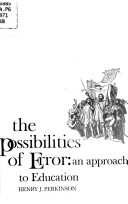 “Yet it is not just the teachers who frighten the young,” he continues; “it’s the whole educational enterprise that has institutionalized moral and intellectual authoritarianism through policies and procedures that threaten and control pupils. … Through dialogue,” he concludes, “critics and educators both can come to an increased consciousness of what educators are doing to the young — an awareness of the ways teachers and schools do frighten them.”
“Yet it is not just the teachers who frighten the young,” he continues; “it’s the whole educational enterprise that has institutionalized moral and intellectual authoritarianism through policies and procedures that threaten and control pupils. … Through dialogue,” he concludes, “critics and educators both can come to an increased consciousness of what educators are doing to the young — an awareness of the ways teachers and schools do frighten them.”
Some of which is not much different from what I found when I revisited the thought of the Brazilian Paulo Freire, extracting from his classic Pedagogy of the Oppressed the understanding that an oppressive educational system hobbles everyone within it, the rulers and the ruled alike. Furthermore, Freire’s ideas pushed me to consider the possibility that, if I truly believed myself operative in an osmotically totalitarian culture, perhaps I needed to broaden my definition of “the oppressed” to include all of my students, regardless of economic class, and myself as well.
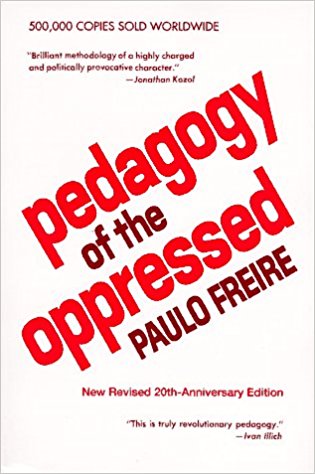 In that light, I think I may have done my students at New York University a disservice in my final years there, coming to see them as pampered rich kids (which they were, with few exceptions) without also recognizing that even wealth and privilege did not protect them any longer from the stupefying tendencies of the system, which now runs so amok that it appears hellbent on dumbing down everything and everyone, even the offspring of the ruling class presumably groomed to inherit power.
In that light, I think I may have done my students at New York University a disservice in my final years there, coming to see them as pampered rich kids (which they were, with few exceptions) without also recognizing that even wealth and privilege did not protect them any longer from the stupefying tendencies of the system, which now runs so amok that it appears hellbent on dumbing down everything and everyone, even the offspring of the ruling class presumably groomed to inherit power.
That led me into Freire’s wonderful “dialogues on transforming education” with Ira Shor, gathered under the title A Pedagogy for Liberation and published in 1987. To my relief, these two educators agreed wholeheartedly that as an educational tool the prepared lecture — a form I sometimes utilize, as on this occasion — was not inherently oppressive, but could appropriately be used in tandem with the dialogic method, so long as one employed it for purposes of challenge rather than as a presumed vehicle for some imagined, inoculative “transfer of knowledge.” On another level, one important section of the book concerns the imperative of liberating “first-world” students, which begins with the recognition that what the authors identify as a “culture of silence” and a “culture of sabotage” among first-world students are symptomatic of the sometimes obvious but often subtle oppressions that permeate those societies. “The sad reality,” Shor says at one point, “is that students are largely alienated, bored and uncooperative, even when they are ‘well-behaved.’ Who can celebrate their silent boredom or their passivity?”
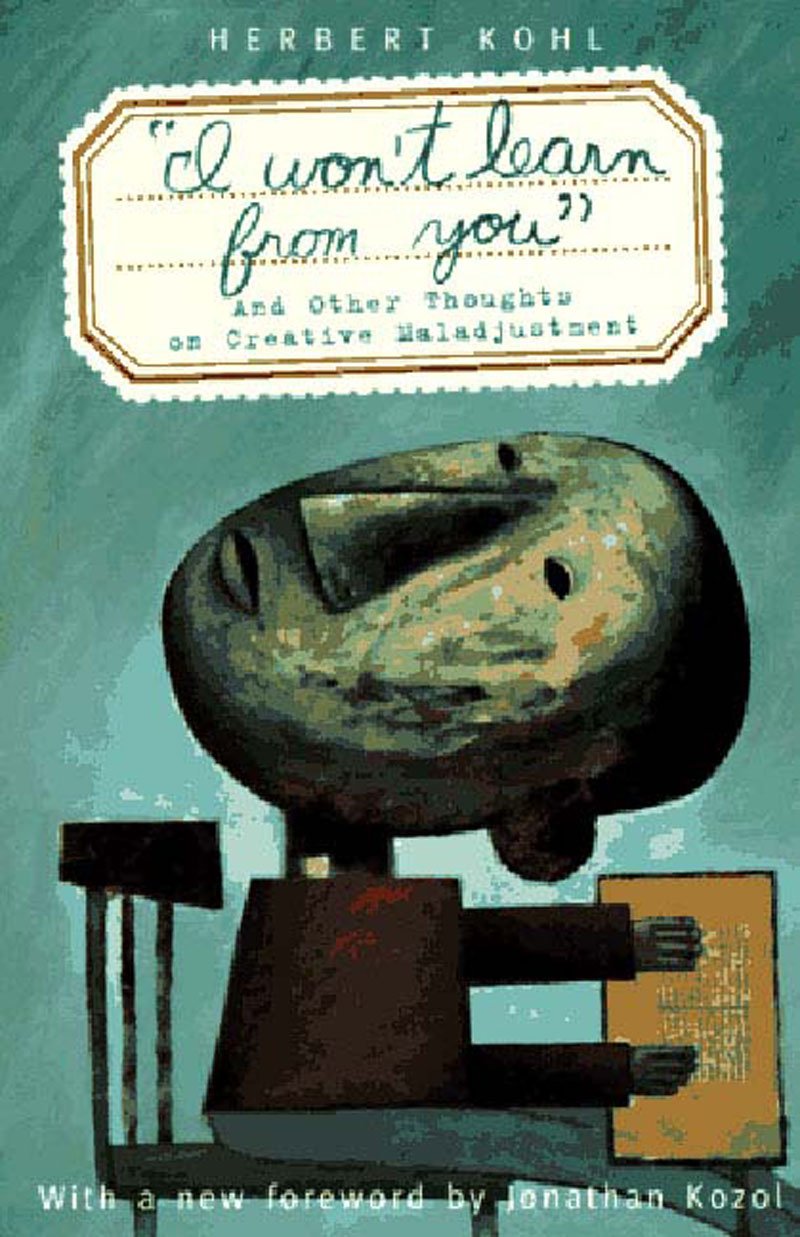 Because that described precisely the majority of the students I’ve encountered over the past decade, I decided I needed to know more about it. Fortuitously, I happened across Herbert Kohl’s 1994 collection of essays, I Won’t Learn from You — in which he distinguishes learning disabilities from the willful activity he calls “not-learning,” and proposes the latter as an intuitive response and a personal strategy for survival in an educational environment that a student perceives as hostile to his or her integrity and autonomy. Since I consider the corrupt, decaying culture I and my students inhabit as hostile to the integrity and autonomy of all of us, I found myself prompted by Kohl’s concept to rethink the responses of many of my students to the ostensible educational “opportunities” and “privileges” available to them — asking myself if their disinterest and seeming apathy might not disguise a deeper and not inappropriate resistance to everything and everyone (myself included) implicated in a system whose unhealth they sensed, however inarticulately.
Because that described precisely the majority of the students I’ve encountered over the past decade, I decided I needed to know more about it. Fortuitously, I happened across Herbert Kohl’s 1994 collection of essays, I Won’t Learn from You — in which he distinguishes learning disabilities from the willful activity he calls “not-learning,” and proposes the latter as an intuitive response and a personal strategy for survival in an educational environment that a student perceives as hostile to his or her integrity and autonomy. Since I consider the corrupt, decaying culture I and my students inhabit as hostile to the integrity and autonomy of all of us, I found myself prompted by Kohl’s concept to rethink the responses of many of my students to the ostensible educational “opportunities” and “privileges” available to them — asking myself if their disinterest and seeming apathy might not disguise a deeper and not inappropriate resistance to everything and everyone (myself included) implicated in a system whose unhealth they sensed, however inarticulately.
As Kohl, who as a teacher works mostly with grade-schoolers, puts it at one point, “children in school act in ways that are shaped by the institution; therefore it is essential never to judge a child by his or her school behavior.” Kohl also speaks for the necessity of what he calls “creative maladjustment” as an adaptive strategy for surviving within an unhealthy context, and urges teachers to encourage it, even when that means bucking the system alongside one’s students.
And that led me back to Lewis Hyde’s astonishing meditation, The Gift: Imagination and the Erotic Life of Property, a book that has meant much to me and, I know, to many others as well. The luminous comments of this poet and essayist on the differences between a gift economy and a market economy must surely resonate for both artists and teachers in this country and elsewhere who nowadays find their fields of activity entirely and unapologetically market-driven, increasingly populated and dominated by bean-counters, number-crunchers, desk jockeys, career bureaucrats, and MBAs.
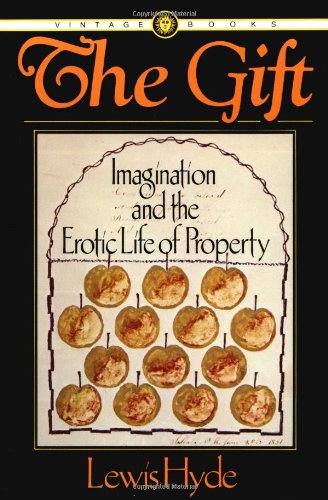 The entirety of Hyde’s intricate argument pertains to the issues at hand, and I recommend it to you highly. I find it particularly valuable because it confronts, names and explores at length the frustration and despair that I, and many others, feel at this present moment:
The entirety of Hyde’s intricate argument pertains to the issues at hand, and I recommend it to you highly. I find it particularly valuable because it confronts, names and explores at length the frustration and despair that I, and many others, feel at this present moment:
“[E]very modern artist who has chosen to labor with a gift must sooner or later wonder how he or she is to survive in a society dominated by market exchange. And if the fruits of a gift are gifts themselves, how is the artist to nourish himself, spiritually as well as materially, in an age whose values are market values and whose commerce consists almost exclusively in the purchase and sale of commodities?”
“Every culture offers its citizens an image of what it is to be a man or woman of substance. … [A] disquieting sense of triviality, of worthlessness even, will nag the man or woman who labors in the service of a gift and whose products are not adequately described as commodities. …
“Moreover,” Hyde continues, “… a gift that cannot be given away ceases to be a gift. The spirit of a gift is kept alive by its constant donation. If this is the case, then the gifts of the inner world must be accepted as gifts in the outer world if they are to retain their vitality. Where gifts have no public currency, therefore, where the gift as a form of property is neither recognized nor honored, our inner gifts will find themselves excluded from the very commerce which is their nourishment.”
Yet his is not a despairing book, if only because Hyde knows that the world’s need for the gifts of its teachers and artists endures, inexhaustible. “If the commodity moves to turn a profit,” Hyde asks, “where does the gift move?” His answer: “The gift moves toward the empty place. As it turns in its circle it turns toward him who has been empty-handed the longest, and if someone appears elsewhere whose need is greater it leaves its old channel and moves toward him. … The gift finds that man attractive who stands with an empty bowl he does not own.”
The task, then, for those of us who think we have gifts, is that of seeking “the empty place” and finding those who have “been empty-handed the longest,” of whom there is never any shortage, and who may walk into our exhibitions and classrooms or find our words on a page at any moment — who may in fact prove to be our next-door neighbors or our best friends’ children, because we live in a system that impoverishes all and actively generates a pervasive, debilitating sense of futility.
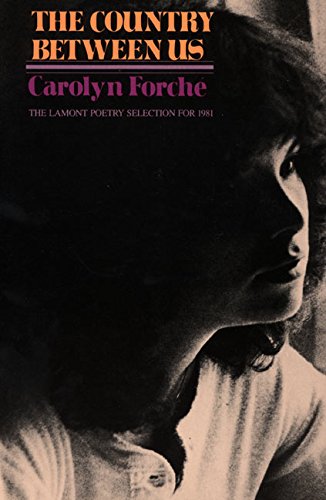 It is that sense of futility that I see as the true enemy of all creative activity, including art-making and teaching, and it shames me to confess, as I’ve done tonight, that I surrendered to it for a time. For I believe that a poet of my acquaintance, Carolyn Forché, speaks the deepest of truths when she says, to people like ourselves, “It is/not your right to feel powerless. Better/people than you were powerless.”
It is that sense of futility that I see as the true enemy of all creative activity, including art-making and teaching, and it shames me to confess, as I’ve done tonight, that I surrendered to it for a time. For I believe that a poet of my acquaintance, Carolyn Forché, speaks the deepest of truths when she says, to people like ourselves, “It is/not your right to feel powerless. Better/people than you were powerless.”
The obligation, then, is the imperative of action, and the struggle against nihilism, and the nurturance of hope. I would call all the authors I’ve cited for you tonight realists, even pragmatists; yet I find all their work permeated with what I’d describe as hope. Herbert Kohl, indeed, is an active advocate of hope — of being hopeful oneself, and of seeking to instill hope in one’s students and to evoke it from them. From his argument I would suspect that his definition of that concept would coincide with the one proposed by the Czech saxophonist, playwright, essayist and president Vaclav Havel, who wrote, in his book Disturbing the Peace:
Either we have hope within us or we don’t; it is a dimension of the soul, and it’s not essentially dependent on some particular observation of the world or estimate of the situation. Hope is not prognostication. It is an orientation of the spirit, an orientation of the heart. …
Hope, in this deep and powerful sense, is not the same as joy that things are going well, or willingness to invest in enterprises that are obviously headed for early success, but rather, an ability to work for something because it is good, not just because it stands a chance to succeed. …
Hope is definitely not the same thing as optimism. It is not the conviction that something will turn out well, but the certainty that something makes sense, regardless of how it turns out. … It is also this hope, above all, which gives us the strength to live and continually try new things, even in conditions that seem as hopeless as ours do, here and now.
•
 Well, that’s what I’ve been chewing on lately. And it’s this undigested stew that I’m bringing into my classrooms this semester. I can’t yet say how it’ll turn out, of course, nor can I even tell you how it’s going so far. The adult-ed seminars haven’t started yet. The first session in Philly was every teacher’s nightmare: twenty college seniors who sat on their hands and volunteered not a word, all of us looking ugly under glaring fluorescents in a cramped, overcrowded, underventilated room set up with traditional formica-and-tubular-steel student seats facing one of those hideous gun-metal gray office desks — the classic “I talk, you listen” configuration. None of them had any familiarity with my work, or with the critical dialogue around photography in general. They manifested no interest in anything. The most significant question they asked me all day was what they should call me. I replied that that was up to them.
Well, that’s what I’ve been chewing on lately. And it’s this undigested stew that I’m bringing into my classrooms this semester. I can’t yet say how it’ll turn out, of course, nor can I even tell you how it’s going so far. The adult-ed seminars haven’t started yet. The first session in Philly was every teacher’s nightmare: twenty college seniors who sat on their hands and volunteered not a word, all of us looking ugly under glaring fluorescents in a cramped, overcrowded, underventilated room set up with traditional formica-and-tubular-steel student seats facing one of those hideous gun-metal gray office desks — the classic “I talk, you listen” configuration. None of them had any familiarity with my work, or with the critical dialogue around photography in general. They manifested no interest in anything. The most significant question they asked me all day was what they should call me. I replied that that was up to them.
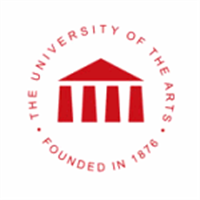 I indulged myself in feeling disheartened for a day or so; in fact, I came close to quitting. Then I asked my department chair to shift us to another venue — a long, narrow seminar room overlooking the library. Last Tuesday we all sat around the polished wood table, a bit more like collaborators. (As does Rex Stout’s plump detective, Nero Wolfe, I “prefer eyes at a level.”)
I indulged myself in feeling disheartened for a day or so; in fact, I came close to quitting. Then I asked my department chair to shift us to another venue — a long, narrow seminar room overlooking the library. Last Tuesday we all sat around the polished wood table, a bit more like collaborators. (As does Rex Stout’s plump detective, Nero Wolfe, I “prefer eyes at a level.”)
I avoided the paterfamilias seat at the head of the table, and plan to move myself around from place to place over the coming months. For whatever reasons — change of stage set, a bit of familiarity with me — they talked more, so I got to start to know them and see where we might go as a collective. Some of them had decided to call me Allan, some Mr. Coleman, and one insisted on addressing me as Professor Coleman, all of which are fine with me. I’d given them a few of my essays to read the week before, so we discussed Diane Arbus, and Cindy Sherman, and hermeneutics and exegetics, and text and context, and we all enjoyed watching the videotape of “spectacular implosions” — you know, those explosive deconstructions in which buildings are leveled without disturbing the ones next to them — that I brought along to serve as an example of critics at work.
So we’ve started to loosen up and enjoy ourselves. At the very least, the lighting’s better, the acoustics too, and it’s more spacious. There’s even wall-to-wall carpet. I move around a lot when I teach, and I’m thinking of taking my shoes off next time. If I do, they’ll get to take theirs off too, of course. I’m trying to decide if that means I should require the wearing of socks. It seems to me that, whether I take the authoritarian or the permissive position on that, there’s a real possibility that some teaching and learning may go on in there. That’s my hope, anyhow.
•
This post sponsored by a donation from John Teti, Sr.
•
 Special offer: If you want me to either continue pursuing a particular subject or give you a break and (for one post) write on a topic — my choice — other than the current main story, make a donation of $50 via the PayPal widget below, indicating your preference in a note accompanying your donation. I’ll credit you as that new post’s sponsor, and link to a website of your choosing. Include a note with your snail-mail address (or email it to me separately) for a free signed copy of my 1995 book Critical Focus!
Special offer: If you want me to either continue pursuing a particular subject or give you a break and (for one post) write on a topic — my choice — other than the current main story, make a donation of $50 via the PayPal widget below, indicating your preference in a note accompanying your donation. I’ll credit you as that new post’s sponsor, and link to a website of your choosing. Include a note with your snail-mail address (or email it to me separately) for a free signed copy of my 1995 book Critical Focus!
 But wait! There’s more! Donate now and I’ll include a copy of The Silent Strength of Liu Xia, the catalog of the 2012-13 touring exhibition of photos by the dissident Chinese photographer, artist, and poet, currently in her sixth year of extralegal house arrest in Beijing. The only publication of her photographic work, it includes all 26 images in the exhibition, plus another 14 from the same series, along with essays by Guy Sorman, Andrew Nathan, and Cui Weiping, professor at the Beijing Film Academy.
But wait! There’s more! Donate now and I’ll include a copy of The Silent Strength of Liu Xia, the catalog of the 2012-13 touring exhibition of photos by the dissident Chinese photographer, artist, and poet, currently in her sixth year of extralegal house arrest in Beijing. The only publication of her photographic work, it includes all 26 images in the exhibition, plus another 14 from the same series, along with essays by Guy Sorman, Andrew Nathan, and Cui Weiping, professor at the Beijing Film Academy.






Dear Alan, thank you for sharing this series of post on education. But I’m left to wonder how that 1997 semester went in the end. Did your students take their shoes off? Did any fruitful conversations and learning spring from your newly educated teaching and learning processes?
Fabricio
I can’t recall whether any of the students joined me in going shoeless on that carpeted floor. But the class went well, in my opinion — and, from the evaluations they turned in at the time (and what I’ve heard from a few of them since), the students mostly agreed.